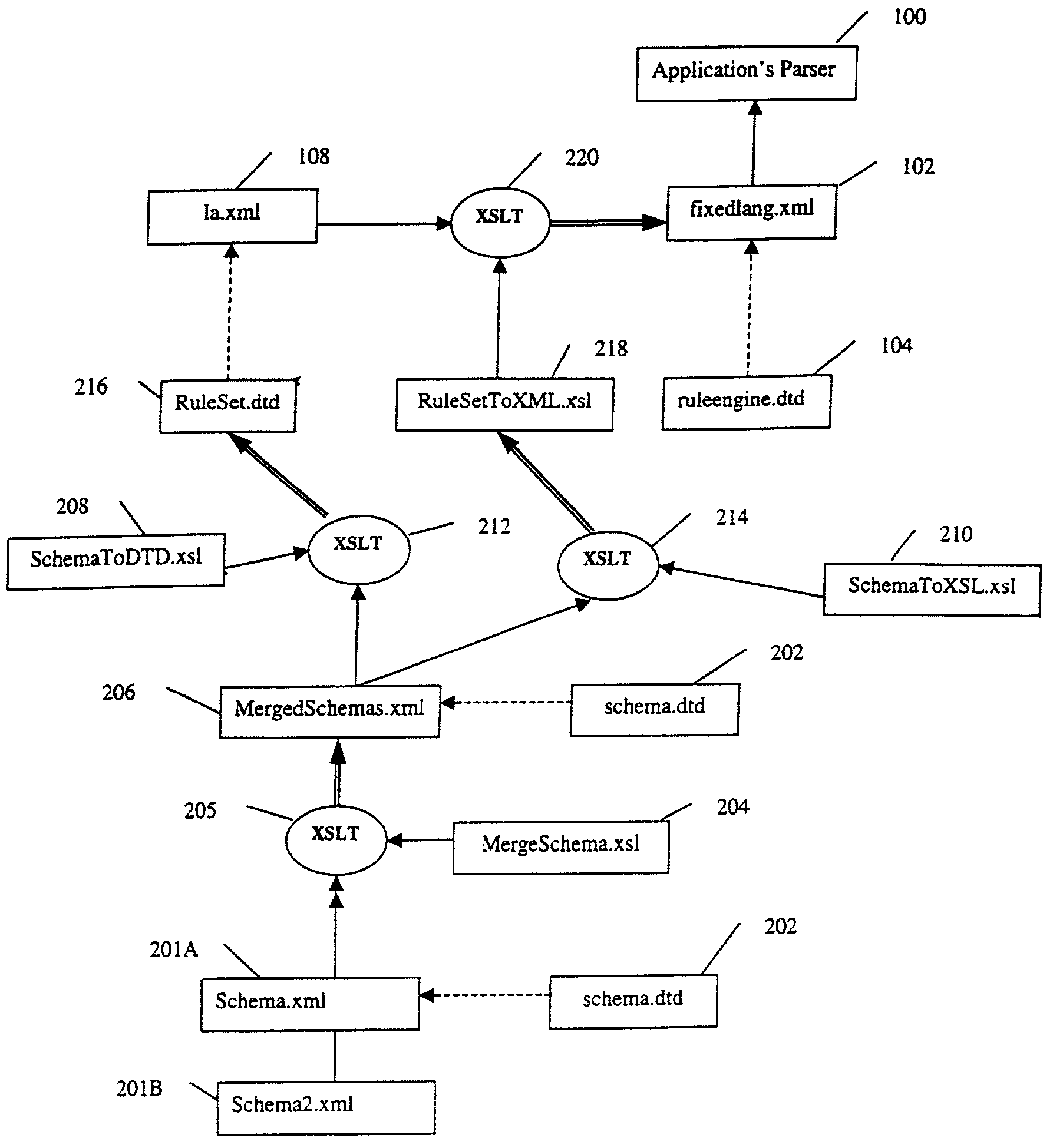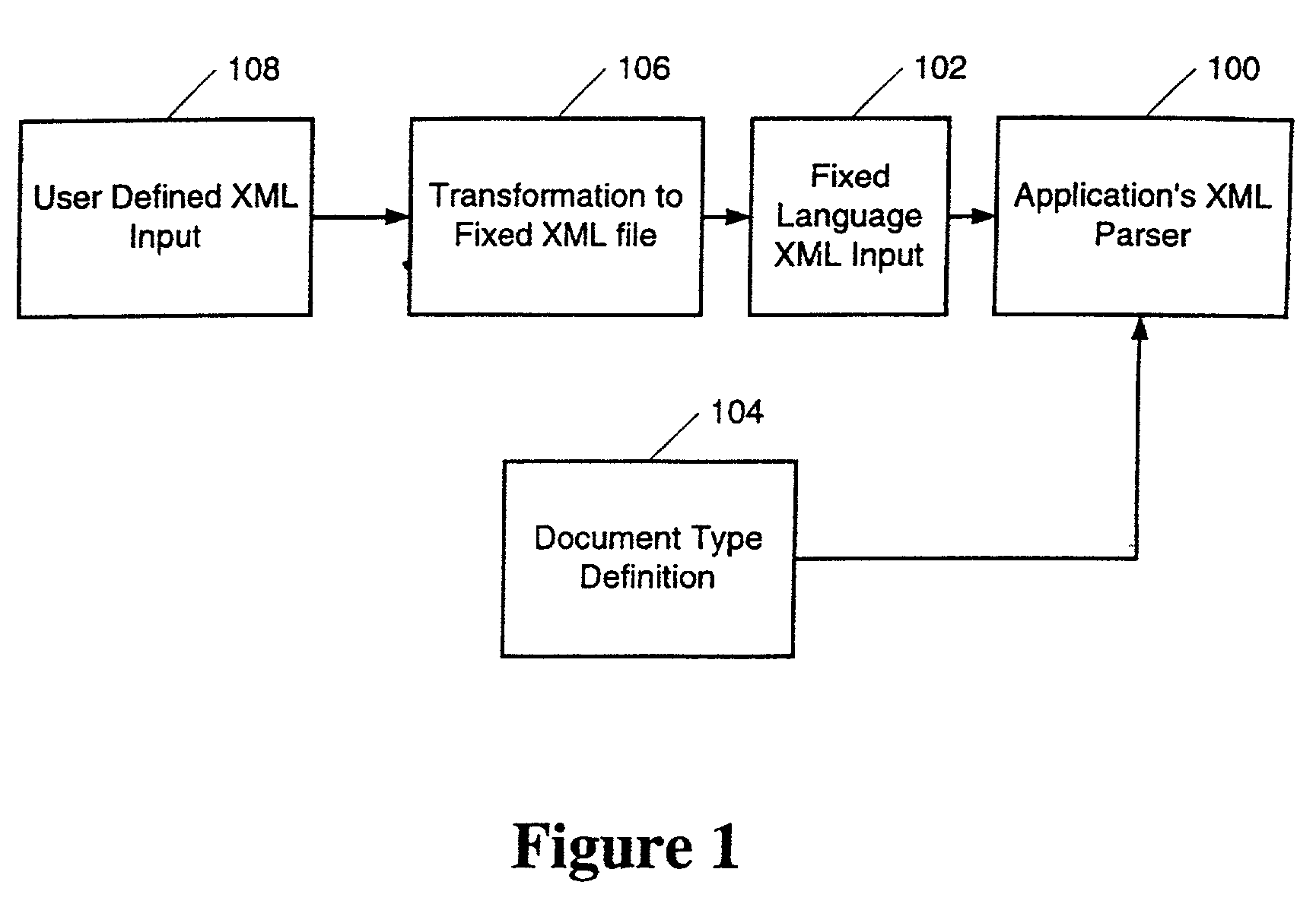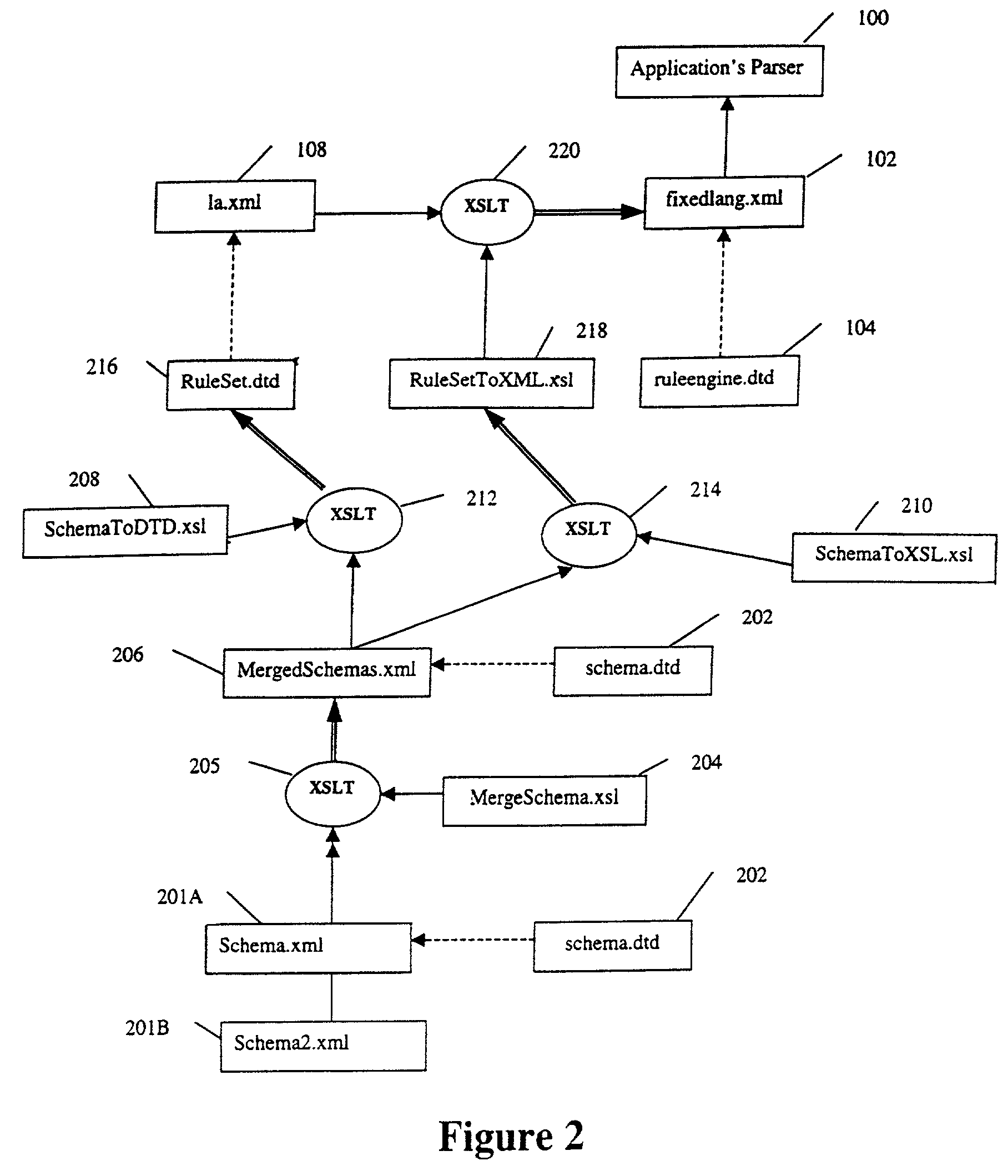Extensibility and usability of document and data representation languages
a document and data representation technology, applied in the field of information and data processing technology, can solve the problems of prone errors in verbose xml files, overwhelmingly complex xml files that are typically created, etc., and achieve the effect of improving the usability of structured input files and simplifying initial inputs
- Summary
- Abstract
- Description
- Claims
- Application Information
AI Technical Summary
Benefits of technology
Problems solved by technology
Method used
Image
Examples
an example
[0062]In an example of the processes of an embodiment of the present invention, assuming a user desires to create the fixed XML file shown below (e.g., fixedlang.xml) for an application conforming to the ruleengine.dtd of the example above.
[0063]
fixedlang.xmlimplementor=“com.trilogy.fs.dms.ruleEngine.core.preconditions.JurisdictionPreconditionPart”>value=“CA” / >
[0064]This input file may be too complicated for the novice user to create. For example, the novice user must know which “implementor”, i.e., java object, to call for the precondition-part object. The present invention provides a method for the novice user to obtain the same XML file using a much richer language. In an embodiment, the user initially defines a schema for the desired grammar. As previously discussed, the schema may be created by an industry group, a consultant hired by the user, the Information Technology (IT) department of the user's corporation, etc. An example schema file is as follows:
[0065]As shown, the sch...
PUM
 Login to View More
Login to View More Abstract
Description
Claims
Application Information
 Login to View More
Login to View More - R&D
- Intellectual Property
- Life Sciences
- Materials
- Tech Scout
- Unparalleled Data Quality
- Higher Quality Content
- 60% Fewer Hallucinations
Browse by: Latest US Patents, China's latest patents, Technical Efficacy Thesaurus, Application Domain, Technology Topic, Popular Technical Reports.
© 2025 PatSnap. All rights reserved.Legal|Privacy policy|Modern Slavery Act Transparency Statement|Sitemap|About US| Contact US: help@patsnap.com



